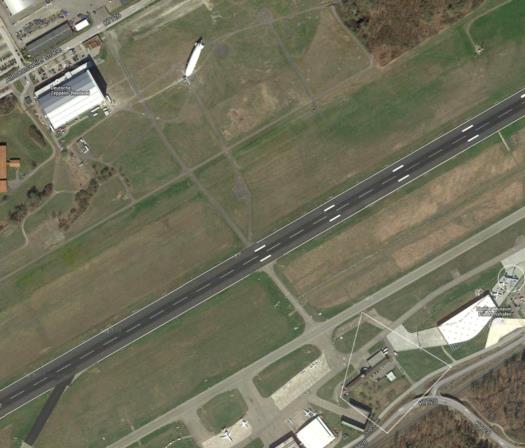
NavList:
A Community Devoted to the Preservation and Practice of Celestial Navigation and Other Methods of Traditional Wayfinding
From: Frank Reed
Date: 2014 Dec 13, 12:56 -0800
Greg, you wrote:
"Did you happen to notice that the bow shadow of this airship is four stories higher than the stern . This is going to mess with the geometry."
I did notice. I pondered. And I decided to ignore it. :) This whole area is also rather steeply sloped. The Thames River is a few hundred yards NNW from these buildings, and the Greenwich Observatory is just a short distance SSW. The Thames is at the low point in the terrain, and the observatory is at the top of a steep hill. So the "height" of the airship is also indefinite on that score. We can be rather accurate about the slant height from the middle of the shadow, but everything else involves geometric assumptions.
Thanks for the link to the youtube video in your next message. You called it the "Stella Zeppelin". I've been itching to do a little image editing and turn it into the "Stellarium Zeppelin"... Don't get me wrong, I like "Stella Artois", but I need a Stellarium zeppelin.
And now for another zeppelin shadow. Once again, I googled phrases until I found something interesting. It's a photo (see below; attached) of the shadow of one of these modern zeppelins passing over some low buildings that are presumably on the edge of an airfield --since there's an old airplane on the ground there. I decided to see if I could sleuth it out and figure out what we were looking at. I enjoyed the process, so here are my steps:
- The airplane has German crosses on the wings, so probably somewhere in Germany.
- The airplane resembles a P2V Neptune (a 1950s era submarine-hunting aircraft, which, if I recall correctly, Ken Gebhart used to navigate). This aircraft is not a Neptune, but it's the same twin-engine configuration with a "stinger" tail.
- According to Wikipedia, there are several aircraft in the same general category as the P2V Neptune including the "Breguet Atlantic" which was in fact used by the German Navy in earlier decades, and that type appears to match the aircraft in the photo.
- This aircraft is "parked" on a grassy field and appears to be on display at a museum or maybe as a "gate guardian" at a military airfield.
- The Wikipedia article for the Breguet Atlantic does not list any on display.
- With some googling I find one on display at Peenemünde, but it's a false lead.
- But wait! The German-language Wikipedia article on the aircraft may be more informative, and sure enough, after auto-translation, it lists one on display at the Dornier Museum in Friedrichshafen (near the common border of Germany, Switzerland, and Austria).
- Friedrichshafen and zeppelins. Hmmm. That rings a bell...
- Visiting Google Maps for the Friedrichshafen airport, I find the Breguet Atlantic, but it doesn't match the location in the photo. Another false lead? On the other hand, there's a Zeppelin NT at its mooring mast on the other side of this airfield. This has to be the place.
- Carefully scanning around the airfield, I find the small buildings in the photo (smaller than expected) and the empty field to which the Breguet Atlantic will presumably be moved at some point after the Google aerial imagery was acquired (or maybe it's the other way around).
- I'm including below (attached) a composite of the airfield at Friedrichshafen from Google Maps showing the moored Zeppelin NT, the area framed by the shadow photograph oulined, as best I could, and the Breguet Atlantic that made this all possible is circled.
Now how high was the zeppelin when the photo was taken??
Frank Reed
ReedNavigation.com
Conanicut Island USA








